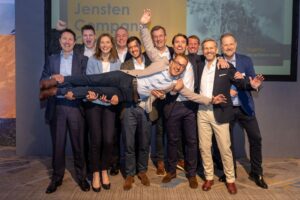Each year, Accenture Interactive synthesizes observations from their designers and innovators around the world to identify potentially influential signals and trends. In the Fjord Trends 2022 report, we see how these shifts in human relationships impact a variety of industries, including insurance.
1. Come as you are.
COVID-19 lockdowns gave workers around the world time to rethink their life and work choices. For many, this greater sense of agency resulted in moves toward freelance work and other new income streams from the sharing economy. As more of the workforce moves to freelance full- or part-time, homes and personal vehicles are getting more business use and blurring the lines between personal and small business risk.
In our Insurance Revenue Landscape 2025 report, we estimate the global revenue opportunity for insurers in the sharing economy will grow to $40 billion. Incumbent carriers now offer more products adapted for personal property exposed to sharing economy risk and innovative ways of underwriting freelancers. Meanwhile, insurtechs like Simplis are also making moves in the sharing economy space.
2. The end of abundance thinking?
COVID-19 disrupted supply chains worldwide, creating a persistent phenomenon many have never experienced: shortages. This experience has called into question the effects of abundance culture on the environment and led more people to think about their own consumption choices.
This is especially true among Millennial and younger consumers. In our Insurance Consumer Study, more than two-thirds (67%) of respondents age 18 – 34 say they want digital experiences that encourage sustainable travel and shopping practices. Swiss insurer Helvetia is responding to such consumer demand with a program that allows customers to offset CO2 emissions.
3. The next frontier.
The metaverse, a virtual space in which people increasingly spend time and money, is becoming less conceptual and more real. While still largely the domain of gamers, the metaverse is a place where real money can be made or lost, and the insurance industry is looking for ways to help customers respond to its risks.
While it’s still early days for offers like NFT insurance coverage, insurers are preparing for the inevitable expansion of the metaverse. For example, cryptocurrency is becoming an option for the payment of premiums.
4. This much is true.
With the internet and smartphones, customers are now used to having a world of knowledge at their fingertips. But finding accurate information from trusted sources isn’t always easy. Across every industry, businesses are challenged to be a trusted source of information any time of day or night and in whatever channel the customer prefers.
We see insurers and insurtechs responding to this need in a variety of ways. For example, customers of a general insurer in the U.K. can get answers to their auto insurance policy questions through their smart speakers, with answers drawing from a continuously updated library of commonly asked questions. And, French insurtech Fluo offers to help customers optimize their insurance coverages by analyzing contracts and identifying unnecessary duplications.
5. Handle with care.
The need to give and receive care is fundamentally human and one that the insurance industry was created to help meet. In the post-COVID era, care is now more visible, valued, and openly discussed. We see this elevation of care in the evolving digital experiences insurers are creating for customers and employees.
One example is Prudential Group Insurance. They are helping improve access for disability insurance claimants to care services and crisis intervention, as well as self-service tools for psychoeducation, relaxation, and coping skills training. This intervention is expected to improve disability outcomes through mitigation of the mental health challenges that may accompany a disabling event.








